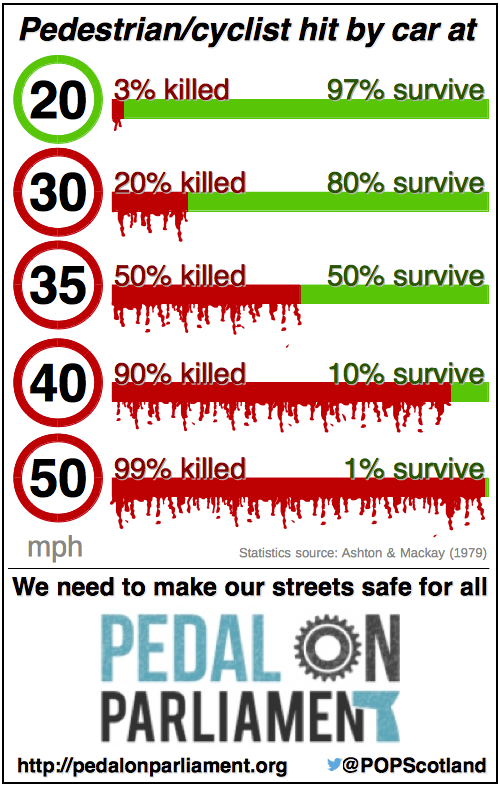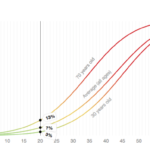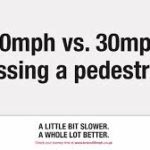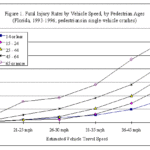Springholm is shown above in the tranquil era before rapid mass motorised freight transport thundered through day and night. (image credit - C. Miller from Postcard)
THE CAMPAIGN TO
BYPASS SPRINGHOLM
Dedicated to the memory of Catherine Bonner, late of Fairlie, taken before her time by a lorry crash when she should have been safe inside her roadside home. Village lives matter. Making main road Springholm a safe and pleasant place by promoting the following: Taming the A75 trunk road traffic, first to compliance with the 30 mph limit, then to the World Health Organisation’s safe residential street speed limit guidance of 20 mph when vulnerable persons are in unprotected proximity to moving traffic and then getting it bypassed. Reporting evidence of illegal driving on the village A75 to appropriate authorities and urging their adoption of robust measures to combat this, ideally by road engineering measures. Ensuring that all parts of the village A75 road infrastructure receive timely repairs when defects are identified because many defects compromise safety and/or create addition intrusive traffic noise blight. Sharing information to foster a wider understanding of A75 road safety issues in the remaining un-bypassed built up areas, including its potential negative health impacts. (Photo credit- image opposite: Galloway News)
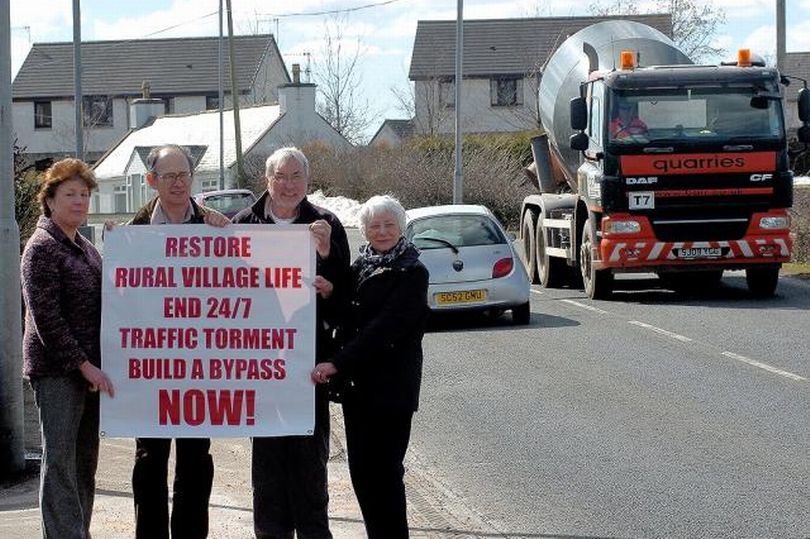
A75 North Channel ferry traffic heading east from port to motorway late evening - Video Left
traffic dangers:
IMPACT ENERGY 70% OVER W.H.O. SAFETY STANDARDS
The World Health Organisation (WHO) advise that speed should not exceed 20mph when pedestrians and other vulnerable persons are in unprotected proximity to moving traffic. This is because the resilience of the human body declines very rapidly above that impact speed leading to severe injury or death as impact speeds increase above that. None of the traffic in the video opposite is WHO safety compliant. Traffic is often encountered on Springholm main road twice as fast as WHO safety standards, sometimes much more, as videos below reveal. More so at night when there are fewer speed limit compliant pace setters coupled with no credible risk of police detection and subsequent penalties. HGV drivers heading to and from the ferries are by far the most troubling risk takers. As videos show some choose to drive up the street far above their open road class speed limit. That this endangering professional driver behaviour can regularly filmed is an indictment on the A75 traffic management failings of the powers that be whose duty is to protect the public from such illegality and attendant risks. This is a recurring behaviour each night and why a bypass is the only truly robust solution to this threat. Speeds of up to three times this limit have been noted at most points of the village especially in the exiting channels. Whilst there is widespread adoption of the WHO’s internationally recognised and respected safety advice sadly it is mainly in cities, towns and outside schools on Council controlled roads. The A75, being a trunk road, is controlled directly by the Scottish Government and the results of its traffic management complacency is on show here for all to see. Wales is a notable exception and the Assembly plans a mass roll out of WHO safe speed standards to residential streets with such risk. Highly elevated traffic noise, particularly through the night, is also a significant threat to the health of vulnerable residents according to the WHO – see button (HEALTH DAMAGING IMPACT OF TRAFFIC NOISE) at foot of page for additional information.
KEY ROAD SAFETY GOALS
OUR CAMPAIGN GOALS
THESE ARE OUR KEY CAMPAIGN GOALS TO SUBSTANTIALLY REDUCE THE NEGATIVE ENVIRONMENTAL IMPACTS OF MAIN STREET TRAFFIC :
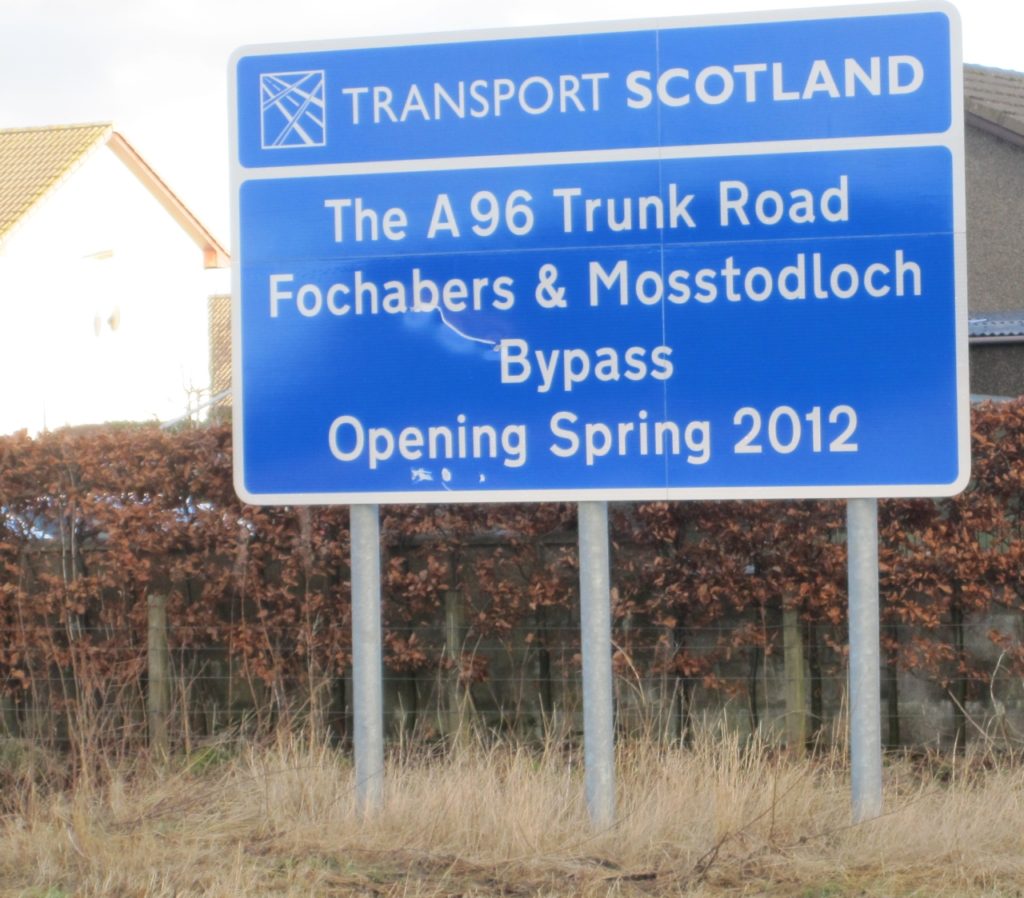
A BYPASS - THE GOLD STANDARD FOR ALL RESIDENTIAL STREETS ON MAJOR ARTERIAL ROADS
The A75 is part of the E18 Euro route. This UN designated road is approx 1890kms long and the most substandard section of this route, by some way, is that part of it also designated the A75 as it passes through Dumfries and Galloway region. This generally un-modernised low grade section of the E18 has the unenviable reputation of being largely single carriageway and still passing down residential streets. The remainder of the Euro route is, at minimum, dual carriageway and bypasses all residential streets. Indeed Springholm and Crocketford remain uniquely traffic blighted exceptions when bypasses were humanely provided to the previously long suffering residents of Gretna, Eastriggs, Dornock, Rigg, Annan, Collin, Dumfries, Castle Douglas, Bridge of Dee, Ringford, Twynholm, Gatehouse of Fleet, Minnigaff, Creetown, Newton Stewart , Glenluce and Dunragit. The Scottish Government is now badly lagging behind in the provision of modern road infrastructure efficiently linking the motorway network to the port serving Northern Ireland. Elsewhere in the UK major investment has been made in such port roads. Besides ending the barbaric traffic blight and risk on the above streets on humanitarian grounds there is also a compelling case for bypassing to enhance the commercial viability of the route by eliminating such bottlenecks in order to enhance journey time and journey time reliability. Many times road works, inevitably involving temporary traffic signals and convoy operation, at Springholm create long traffic queues, especially heading east from the port. Derek Mackay MSP when Transport Minister said no to our Springholm Bypass request made on his watch so ensuring we remained second class citizens in the road safety league. Thankfully he is no longer in that post. Ministerial successors in that role will hopefully have more humanitarian leanings than Mr Mackay showed. In 2018 in the House of Commons it was stated by Alister Jack MP, “The Scottish Government have said they recognise the importance of the A75 to the strategic transport network, to the economy of south-west Scotland and to the rest of the country, and I hope they come up with the money to demonstrate it, starting with bypasses for Springholm and Crocketford. Those two villages have been making the case to be bypassed for years, and they are in desperate need of it”.
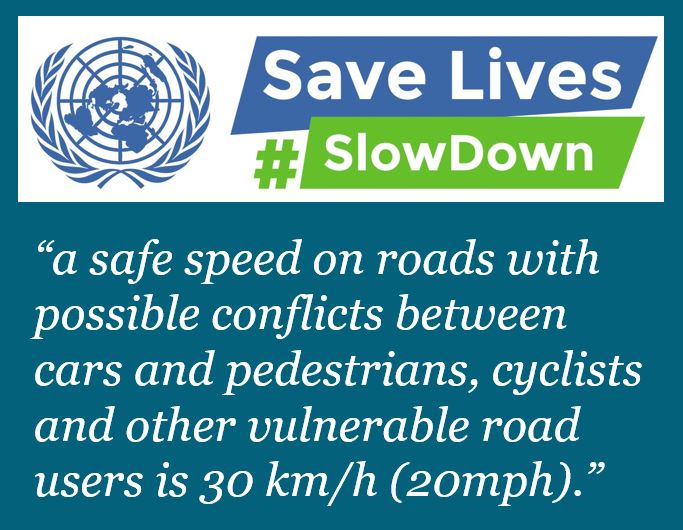
A VILLAGE MAIN ROAD SPEED LIMIT MEETING W.H.O. SAFETY STANDARDS
Obtusely adhering to the discredited road safety standards of the last century, the Scottish Government is still refusing to follow the World Health Organisation’s internationally recognised road safety advice as set out above with respect to its own trunk road estate. Local councils, in many cases, are far further ahead of the Scottish Government in their residential street road safety policies. The Scottish Government’s residential street safety science denial leaves vulnerable road stakeholders in harm’s way to an utterly unacceptable degree around the clock in trunk road villages. The permitted speed, let alone the often far higher actual speed, is potentiality catastrophic if a vehicular collision were to arise involving an inadequately protected person be that person indoors, in an exposed street frontage home , on their home frontage, on the pavement, on adjacent public open space or on the A75 itself. Mere luck is all that is presently averting potential disaster. It’s a gaping wound on the A75 that only a bypass can heal. Those who are “woke” about social and environmental justice will understand how ill used this trunk road community is by our national transport policy makers. No-one in and around their street home environs, pavements etc should have this elevated risk and, at many times, existential threat when the existing limit is egregiously flouted, as per example videos below. Such scenes are all too easy to film here. It is apparently quite beyond the resource of over stretched rural police to condition these impatient driver behaviours with a credible threat of enforcement. The very busy street has either to be re-engineered to severely inhibit the practical possibility most drivers have of attaining lethal speed or bypassed altogether. Mere educational signage on or beside the carriageway, as now, fails this community when rogue drivers are intent on speeding, as so many still are, all around the clock. It’s all because the village should not still be on the route. Meantime the Scottish Government only presents rogue drivers with toothless traffic calming and it seems are so complacent about the remaining potential collision risks as to regard these measures as adequate. In essence this traffic threat is a human rights violation when set in the context of the World Health Organisation’s unequivocal road safety advice. Residents’ safety margins are being deliberately and severely compromised by our political leaders in order to maintain acceptable journey speeds on an inadequate route. A road no longer fit for purpose as a principal international freight, etc. artery between mainland UK and the island of Ireland. There is no legal impediment to 20mph zoning, for example, Maybole on the A77 has a 20mph limit and is also being given a bypass yet Keith Brown MSP when Transport Minister turned down Springholm for inclusion condemning the street to unregulated speeding far above WHO safe limits and his successor Derek Mackay MSP flatly said no to a Springholm bypass so ensuring we remained second class citizens in the road safety league: https://www.ayrshiredailynews.co.uk/post/maybole-20mph-speed-limit-introduced
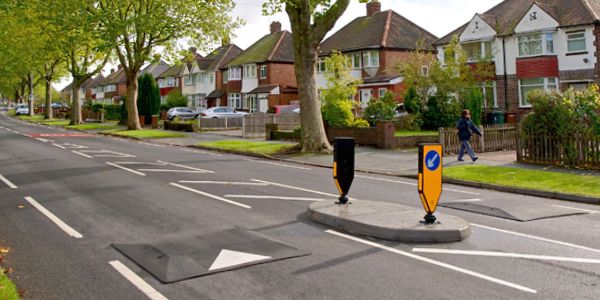
HARD ENGINEERED TRAFFIC CALMING TO TO PHYSICALLY INHIBIT SPEEDING
Educational signage be it vehicle activated or “slow” road marking does usually work to remind inadvertent speeders to reduce speed. However such measures fail when an impatient driver sees a clear road ahead and is determined to speed. Sadly this is all too true of many professional drivers as well as others. Many tens of thousands exceed 40 mph and more whilst still well within the village 30 mph limit. Such speeding invariably remains unpunished and there is almost no credible threat of formal action so there are many persistent offenders. In this respect the Springholm speed control traffic signals are paper tigers with no teeth. Many thousands of drivers defy red halt signals triggered by their speeding. These include many of those driving full sized HGVs who unquestionably owe the community the greatest duty of care given how potentially devastating a run off collision could be. Even some road side home occupants are placed at risk due to the traditional nineteenth century arrangement of older homes dating from the era of horse drawn transport now far closer to passing traffic due to subsequent road widening much reducing frontage buffer zones. This remains an unmitigated existential threat.
FAQ
some questions and answers…
Quite simply because if the village main street was made compliant with the World Health Organisation’s safety guidance for the protection of the vulnerable it would necessitate the adoption of a 20 miles per hour speed limit which would be incompatible with acceptable journey times in the judgement of many impatient drivers. The two unbypassed villages already represent a bottleneck on what is otherwise an unimpeded route as far as residential speed limits are concerned. It is clear from official speed census data captured at multiple points in the village that many drivers already resent the inadequate 30mph limit and have succumbed to the temptation to indulge in illegal compensating speeding in what is a speeding enforcement vacuum. At present there is an annual traffic volume of 3.3 million vehicles including some 350,000 full sized articulated HGVs. Average speeds may appear innocuous at first glance but this crude measure masks the grim fact that substantial numbers of drivers are considerably faster and, as such, are the ones most liable to pose collision threats and disproportionately add to overall traffic noise blight.
Quite simply because the village main street traffic speeds still fall woefully short of meeting the World Health Organisation’s safety guidance for the protection of the vulnerable which would necessitate the adoption of a 20 miles per hour speed limit. The existing 30mph limit is widely flouted and with almost nil enforcement. In a somewhat half hearted effort to tackle the chronic speeding problem on a 1300M long village main street speed activated driver educational signage has been installed including so called reverse discrimination speed control traffic signals which are programmed to present a red halt signal to drivers exceeding a speed which is set significantly higher than the posted limit of 30 MPH. This margin is almost 70 per cent above the World Health Organisation’s safe limit for the protection of the vulnerable on such a residential street. Were that not bad enough the red halt signals have no enforcement capability and a great many impatient drivers simply ignore both the posted speed limit and the ensuing red light they encounter. There are many instances this campaign has filmed where all traffic calming has been ignored by drivers at speeds two to three times the WHO safe speed limit. From a safety point of view all this represents an abject failure to adopt best practice traffic management for the protection of the vulnerable. Already across the United Kingdom some 20,000,000 residents have or soon will have the protection of 20 mph zoning. However the roll out of this to the much more challenging environment of residential trunk road streets has been depressingly slow and for this reason we are advocating a bypass. Even if the speed controls within the village were to have the full force of the law the reality is that a rural police force is quite unable to mount a credible threat of enforcement unless cameras are authorised. Politically cameras are a sensitive issue and their useful deployment in the fight against driver offending has been much restricted by unnecessary red tape. Many drivers, particularly those professionals driving for a living, are very well aware of this enforcement limitation on our street and sadly when time pressed they represent the group most likely to gamble with the law, residents lives and peace of mind beside the road. The village main road environment can be no-one’s idea of a peaceful existence and in recent decades this has unquestionably played a part in inhibiting walking and cycling. It is a dysfunctional and blighted environment in marked contrast to that which now beneficially exists in the many former A75 communities which have been mercifully bypassed in most instances many decades ago. Springholm and Crocketford had been considered for bypasses as far back as the early 1970s when a route was pegged out and there was some test drilling to establish ground conditions. Indeed in 1989, following the completion of the Glenluce bypass, the Secretary of State for Scotland announced plans were to be laid for the joint bypassing of these two villages. Of course, nothing in fact happened but after the passing of another generation there is again fresh hope on the horizon. It is because the bypass is again under earnest consideration that this website has been launched at this time. For far too long residents have suffered under laissez faire traffic management which reflects a bias toward rapid journey times/driver convenience above residents overall welfare under what has progressively developed into heavily traffic blighted conditions. There has to be true reverse discrimination re-balancing conditions to favour residents not the ease of fast passage for those spending a mere 90 seconds or so travelling the length of the village main street.
This is a question which our campaign has repeatedly posed to Transport Scotland and the senior politicians responsible for that executive agency of the Scottish Government. The current post holder is Michael Matheson MSP. Recently Finlay Carson MSP asked Mr. Matheson why there was no hard engineered traffic calming at the Springholm village gateways as there is at Crocketford and indeed many other trunk road villages as a first resort traffic calming measure. The Transport Secretary has simply refused the request stating that hard engineered calming is considered unnecessary in the belief (wholly mistaken according to official speed data from embedded automated traffic counters at those locations) that the existing purely educational traffic coming measures are adequate to protect the vulnerable. In truth traffic speeds at or approaching the village exits are severely elevated easily at levels where law enforcement would result in endorsement but for the fact that there is plainly no available resource to undertake such enforcement and so chronic speeding persists utterly un-managed because the road presented to drivers is without any physical impediment liable to induce a reduction in speed at those locations.
Traffic blight consists of a number of harmful or potentially harmful impacts which are linked to the presence of high volumes of traffic, often excessively fast. Leaving aside the egregious threat to life and limb posed by the ongoing deliberate exposure of vulnerable Springholm A75 stakeholders to passing traffic speeds far above the World Health Organisation’s advised safe speed limit of 20 mph, the most obvious environmental impact to any one in proximity to the carriageway and for some distance either side of it is the considerable sound level which is produced under such unsatisfactory residential road traffic conditions. This is distinctly audible in many habitable rooms and in the case of frontage homes can be of a level which renders the prospect of an uninterrupted night’s sleep impossible. In the summer months an open window facing the road would be incompatible with sleep. The problem is substantially magnified by the presence of waves of ferry traffic comprising a very large component of the largest HGVs, usually in close formation. Singly such five and six axle units can generate levels of unwanted noise up to fifteen times greater than a car and when in close formation the wall of sound is even greater. Added to this there are noise spikes caused by the sounding of air horns and bodywork/chassis as unloaded trailers pass over road surface irregularities. Besides noise, air quality is becoming an increasing environmental concern in terms of very small particulate matter which can enter deep into the human respiratory system. Whilst most people recognise this is a hazard associated with internal combustion vehicle exhausts is also the case that all vehicles, including electric, emit equally damaging very small diameter airborne particulate matter from brakes, tyres and the erosion of the binding material in the construction of the road surface. Light pollution is another potentially negative impact on both humans and animals principally from the ill considered practice of illuminating residential arterial roads to a high level by the use of energy saving LED luminaries placed very high above the road which leads to considerable light over spill or trespass onto adjoining land and homes where it is not desired. To compound the potential nuisance such high mounted LED light sources in most cases utilise the more harmful colour temperatures/lumen values instead of more environmentally friendly versions. Respected medical associations have advocated the use of dimmed/shielded warm white LEDs to minimize the harmful and disruptive effects of blue/white light trespass on circadian rhythms critical to restorative sleep patterns in both humans and animals.
Whilst this campaign is primarily focused on securing a far greater degree of traffic safety and reduced environmental impact on/beside Springholm’s main road much of the content of this website is applicable to the A75 within Crocketford. The principal difference is the lengths of the built up area. In Springholm the A75 existing 30 MPH limit extends over a distance of some 1300 metres whereas in Crocketford it is substantially less. The length of the very necessary 30 mph limit in Springholm taxes the patience of many drivers who evidently perceive themselves to be in a justified hurry involving speeding. This anti social behaviour disrespects the residents’ safety and amenity. This attitude is especially prevalent among professional drivers undertaking long distance travel. This all too often leads to them succumbing to the temptation to indulge in compensating speeding between and after the speed control traffic signals. Or even outright sustained defiance of the entire speed limit if free flowing traffic conditions permit this which is often the case with isolated vehicles at night which have been tracked exceeding by a substantial margin not only the village limit but also their weight class limit for the open road. See example videos below.
The road which we know as the A75 (also known as the E18 Euro route under international classification) has its origins at the end of the 18th century when it was constructed as an improved coach road largely supplanting the old military road running in approximately the same direction. It was a turnpike road (tolls collected at Crocketford). The villages of Springholm, and Crocketford owed their prosperity and development to their strategic position on the route. The road has been substantially increased in width and by means of improved alignment and bypasses, most notably during the latter part of the last century when transport volumes substantially increased following the Beeching cuts which saw the closure of the direct rail link west from Dumfries. Being a strategic road i.e. a trunk road it has been under direct central government control for most of this time firstly Westminster and latterly the Scottish Government under devolution. Today the road is managed by the Scottish Government’s executive agency Transport Scotland which is accountable to the Cabinet Secretary Michael Matheson MSP. Law enforcement is carried out by Scotland’s national police force Police Scotland. Scotland’s Lord Advocate James Wolffe QC sets out guidance for, among other things, the prosecution of the road traffic offences. The day to day upkeep of the road is contracted out to Scotlandtranserv which is a commercial consortium maintaining the road for profit. On the watch of successive governments the traffic has grown in volume and vehicle weight and whilst, as mentioned, this has been met with road improvements it is fair to say that these on the A75 have by no means matched the investment made on the remainder of international E18 Euro route of which the A75 is a small and very substandard part. There is a very strong case for substantially more dual carriageway and the total bypassing of all residential roads as is the case on the remainder of the E18. Attempts at least to planning stage have been made in the past to bypass Springholm. In the early 1970s a tentative route was pegged out to the east of the village crossing the A75 before the village western exit involving the substantial removal of the hill on the opposite bank of the Culshan Burn. Aside from some trial bore holes nothing further happened. A bypass proposal was again resurrected following the completion of the Glenluce bypass when the Secretary of State for Scotland Ian Lang MP announced that plans would be laid by the Scottish Office for the joint bypassing of both Springholm and Crocketford, presumably in one combined scheme of A75 realignment. So far as this campaign has been able to ascertain no plans were published and nothing further appeared to happen. More recently a SW transport summit was convened at the Easterbrook Hall Dumfries at which this campaign had the opportunity to informally approach Humza Yousaf MSP, then the Scottish Government Minister responsible for transport. Mr. Yousaf subsequently met local representatives in the presence of senior officials at Crocketford having earlier that day visited Springholm. He announced plans for the installation of additional traffic calming in both villages but conspicuously declined to confirm anything of substance regarding bypasses. Subsequently Aecom consultants were appointed to conduct a SW transport connectivity study which was recently published in its final form. Among the proposals for consideration within this is the possible bypassing of the two villages and additional dual carriageway. It must be noted however that these are presently going forward to option packaging and that there is no certainty that either or both would become a firm commitment to route upgrading. This is why this campaign and other A75 activists must continue to do all they can to promote this most important investment in the all too neglected arterial road infrastructure serving Dumfries and Galloway. The issue of very lax law enforcement in relation to the A75 traffic and in particular on those parts of it within the villages is discussed in a separate FAQ response.
One of the most striking and dysfunctional features of the main road in both Springholm and Crocketford is the total absence of any normal parking on the carriageway. This is not due to any form of parking restriction. The road is not a clearway and there are no waiting restrictions. Rather it is a direct reflection of the impatience and reaction of many A75 drivers to the presence of any form of trivial obstruction that might incur the need to slow or stop briefly. In order to avoid road rage drivers, even when intending to be parked very briefly, opt instead to park either wholly or partially on the pavement, usually the former. Indeed it is not unusual for the pavement to be so used for quite long intervals, possibly all day in the case of a visiting tradesman. This antisocial activity has been a grey area legally but on 10 October 2019 Scotland became the first UK country to ban pavement parking in a move to ensure that people in wheelchairs, parents with pushchairs and older adults etc who are currently forced into oncoming traffic when faced with vehicles blocking their path will now be able to enjoy a new freedom. The charity Living Streets strongly welcomed this move as demonstrating a commitment to accessibility for all, in order that every one can use streets safely and enjoy the benefits that come from being active, outside and connected to their local community. However the charity and others have expressed concern over a clause in the new law or which would see a blanket 20 minute exemption for delivery vehicles. They believe this will make the pavement parking ban more difficult to enforce, be open to abuse and continued to lead to damage and obstructions to footways. This campaign has repeatedly recorded instances of obstructive parking on the pavement adjoining the westbound channel of the A75 within Springholm and calls upon those involved to park in future wholly on the carriageway as is their legal responsibility and right. The bullying response of any impatient motorists has to be ignored, this is a residential community with every entitlement to behave normally as in the bypassed communities. This campaign feels very strongly about this matter as the dysfunctional behaviour of pavement parking is masking the incompatible use of the main street as an international arterial route for heavy freight. Had residents made a determined stand to exercise their entitlement to park on the street it is undoubtedly the case that the powers that be would not enact parking restrictions but instead would have been forced decades ago to recognise the necessity to bypass all A75 residential streets. It is believed that this new law against pavement parking will come into force in 2021. At present it remains unenforceable.
Distracted drivers using phones and CB radios when driving in our village are accidents waiting to happen. The drivers of many vehicles passing along the village A75 can be observed using hand held communication devices in the form of mobile phones and CB radios. It is particularly easy to spot when an HGV driver is using one of these when driving. Though this issue is common to all vehicle sizes those driving the largest and heaviest vehicles owe others the greatest duty of care, both as professional drivers and for being in control of what could become in an instant a weapon of mass destruction to other vehicles, pedestrians or even the occupants of a roadside dwelling. Recent studies have shown that the use of such devices, including hands free versions, are as potentially distracting to a driver’s powers of concentration to properly read the road ahead and react accordingly, as driving with the English permitted maximum alcohol level (an illegal level in Scotland). To make matters even worse the effects of the driver using a mobile communication device have been shown to produce ongoing cognitive impairment for several minutes after their communication ends. There has been a recent high profile criminal court case where the practice of using phones whilst driving was condemned without qualification. The danger appears to arise because the driver’s brain has to devote more thought and concentration to communicating with someone not present compared talking to a passenger. If the conversation is along the lines of a supervisor asking the driver a question like “where did you leave the keys?” the driver then has to visualise the location and his actions at the time, whilst doing so the eyes may be looking ahead but the brain may be partially or even totally elsewhere. It is similar when directions are being noted over the phone etc. Such distractions can add as much as a second to driver reaction time if suddenly having to brake and/or swerve. At 15 or 20M per second this can make the difference between life and death. In the case of HGVs, particularly at the largest end of the weight scale and even more so articulated and drawbar combinations, breaking distances are already long compared to most other vehicles. Tragedy may well ensue especially when insufficient gap has addtionally not been maintained when driving in close formation. This has been repeatedly observed along main road Springholm but thankfully as yet there has not been an emergency where a distracted driver at speed (often far above the 30mph speed limit) in a heavily laden vehicle has had a catastrophic loss of control. Luck is all that prevents this for the hazard can often be seen if one studies the traffic convoys, particularly those heading east through the village, many vehicles in these are being driven from the port to motorway and many drivers are impatient to maintain and achieve rapid progress. This is a very high risk aspect of a sizeable portion the village A75 traffic, particularly the largest freight vehicles. This campaign calls for 1. better driver education on the hazards of using communication devices when driving, 2. stiff penalties for such use, particularly by professional drivers in charge of vehicles over 7.5 tonnes, 3. robust law enforcement by the police and 4. that vehicle manufacturers be mandated to redesign their vehicles so that mobile communication devices are inoperative when the vehicle is running. For a BBC report follow this link: http://www.bbc.co.uk/news/uk-36475180
A75 HGV SPEED LIMIT: Once again elements of freight lobby and their supporters have pressed for the legal right to drive 25% faster than the law in Scotland presently allows. This would, of course, in most cases, merely legitimise speeds the public already observes all along the A75. If it were to simply end at that there might indeed be justification but the rogue element in the HGV driver ranks will inevitably push their luck with the law enforcement agencies and go as fast above the new limit as they can get away with. None of that would be other than detrimental to overall route safety. A significant percentage of ferry freight drivers, but by no means all, in particular have established a reputation along the A75 corridor for unacceptable behaviour. Increased speed is never safer especially in vehicles inherently far less less agile and controllable under high speed cornering or heavy braking than smaller ones. This is especially so for articulated units on bends. We see the deep ruts in the verges and ample evidence of heavy run offs. Another 10mph in the equation is not the way to go unless various poor road alignments west of Dumfries are upgraded. The added speed would be only further bad news for speed limit compliance in the unbypassed villages unless law enforcement is considerably more robust than at present when around 25% speeding tolerance seems to be about the norm for HGVs and 33% for all classes in the village. The latter is absolute madness because 40mph is double the World Health Organisation’s recommendation for the safety of the vulnerable. From his reply it is apparent Humza Yousaf and the Scottish Government will continue to take a cautious, evidence based, approach unswayed by the perennial impatience of some of the freight lobby in relation to shorter journey times and the quest for sweated assets, man and machine. The issue we have is that meantime a blind eye is being turned to speeding and the law is mocked. Far better a 50MPH class limit and tough enforcement. In our opinion all speeding infractions in the village should be liable to enforcement when over 35MPH. Only potentially enforcing at over 40MPH totally devalues the credibility of the main street speed limit as 35- 40MPH is unquestionably a highly dangerous passing traffic speed for the vulnerable.
We have asked this question ourselves many times and in doing so uncovered the sad reality which is that a diminished band of rural police in 2020 no longer has the necessary operational resource to undertake effective speeding enforcement so the village receives almost no meaningful traffic police attention nowadays. At best there might be less than a handful of tickets against a speeding problem which involves many hundreds of thousands of drivers exceeding 35 mph and tens of thousands exceeding 40 mph. Even when there was more robust enforcement no HGV drivers appear to have been caught because they have the means of communication to evade marked car enforcement. The situation regarding the red traffic halt signals is even more hopeless because these do not have the force of law and it would appear no moves are being made any time soon to make them legally enforceable. The red traffic signals are therefore toothless paper tigers i.e. mere window dressing when determined speeders approach them intending to ignore red. It is this institutional incapacity to enforce the law which is a primary motivation for seeking a bypass as the only solution which will truly deliver acceptable traffic safety margins to the village street
If we had shared the pessimism and general lack of advocacy for positive change from such naysayers there would be no added traffic calming and probably no village bypass proposal contained within the Aecom SW Infrastructure Study which you will find on the button below. We already have confirmation that this proposal is expected to find favour and on the engineering side an indication of the likely alignment it will take. However these are only informal and therefore without a legal commitment this campaign cannot afford to be in any way complacent the bypass will actually happen until it is officially announced that it is to be built with a commencement date. Meantime we adhere to the principle that traffic blight relief delayed is relief denied. Residents are meantime at risk under unacceptably fast traffic conditions vastly above the World Health Organisation’s residential road safe speed standard for the vulnerable and so every campaign effort must be made in the interim to achieve this internationally respected and safety standard until a village bypass becomes an accomplished fact. It is all too easy for politicians to make encouraging noises about proposals they have in mind rather than meeting the real challenge of being in power which is to actually deliver positive change in early course. To use the old adage ” fine words butter no parsnips”. When the innovative traffic signals were announced there were gushing official press releases long on hype and general positive spin but in fact these electronic sentinels have proved largely ineffectual given how easy it remains to find passing traffic speeds in the high 30s, the 40s and even the 50s mph at verious points along the main street. The Scottish Government are remarkably reluctant to put in place the robust measures which would actually force drivers to adhere to the 30 mph limit. The engineering and legal solutions are already in the toolkit but it is all too apparent that their fear of negative public reaction in terms of a driver backlash keeps such robust traffic speed control tools unused. So sad that the indignation of some impatient drivers trumps doing what is needed for the proper protection of the vulnerable. The road safety science is firmly on the side of this campaign. So listen up politicians!
In a word “dreadful”. These are the latest red signal activation and violation running totals: These are per a February 2020 FOI response to this Campaign from Transport Scotland. Inbound from Crocketford – red activations = 277,395; red violations = 58,191 violation rate = 24.69%. Outbound to west – red activations = 150,186; red violations = 39,017 violation rate = 26.48%. Inbound from west – red activations = 146,580; red violations = 31,792 violation rate = 26.65%. Outbound to Crocketford – red activations = 102,943; red violations = 34,392 violation rate = 35.21%. Very troublingly since November last year red signal violations outbound to Crocketford have been above 40% every week and some weeks more than half of all drivers have ignored red signal presentations there. Conversely at the westbound exiting signals there has been a reduced level of red violations since October but this has been achieved as a result of the detection loops being moved inward to avoid detecting more than half the number of speeders detected at the previous location closer to the exit . This move which can only have been driven by a desire to flatter the signal compliance data has lessened the protective value of the system for the vulnerable using the road or pavement there. Overall since the reverse speed discrimination traffic signals went live in December 2017 there has been a considerable reduction in weekly red signal activations brought about not by a mass impatient driver re-education breakthrough (a tough challenge on this route) but principally by altering the means of detection so that only triggering speeds at 4 precise and very narrowly defined points on the street matter and one of these is, as noted above, closer now to the village centre whereas speeding is very much worse toward the periphery. Notably in the exiting channels over the final 300M. At the west outbound the watering down of the system has reduced red signal activations by two thirds. i.e. 66% more speeders now able to avoid a red under the revised system settings/detection point whose speeds would previously have triggered a red. Whilst the actual speeds in the village are at many times very unsatisfactory the powers that be have been very diligent in tweaking the system settings over the past two+ years of its operation to steadily produce more acceptable data and minimising loss of journey time by facilitating speeds up to 33mph at all these points and much more elsewhere between and after which is frankly their abiding preoccupation, not safety for the vulnerable here. This Campaign’s videos reveal the ongoing safety threats they would prefer covered up as it was for many, many years before the advent of FOIs, affordable personal radar, Gopros, social media etc. We are now fully woke about the environmental price the community pays for hosting this arterial road traffic in its midst.
Our MP Alister Jack, who is Secretary of State for Scotland, confirmed at Holyrood on 5th March 2020 that after initial appraisal the proposed link between mainland UK and the island of Ireland via the North Channel is not to be via a bridge because its low resilience to high winds would mean an unacceptable number of safety closures. Now it is understood any ongoing feasibility investigation would be concentrating on the only other non ferry link which is a tunnel. Apparently some engineers consider this is also the cheaper option and most certainly feasible from a civil engineering stand point and potentially deliverable within 10 years. We have already written to Mr Jack reiterating, as if he does not already know, that in order to obtain full benefit of such a tunnel the A75 has to be brought up to 21st century standards i.e. much dualling and, of course, Springholm and Crocketford bypasses. It would be extra hellish freight traffic here during the many years of tunnel construction, a vast engineering undertaking, so the bypasses must come first. Mr Jack is on record as saying in the House of Commons in 2018 “The Scottish Government have said they recognise the importance of the A75 to the strategic transport network, to the economy of south-west Scotland and to the rest of the country, and I hope they come up with the money to demonstrate it, starting with bypasses for Springholm and Crocketford. Those two villages have been making the case to be bypassed for years, and they are in desperate need of it”. Indeed but it remains to be seen just how much influence he/ Boris Johnson can bring to bear on the much needed improvement of the now devolved A75 but perhaps one option could be a ring fenced grant from Westminster (£2bn?) given how much such an upgraded link would also benefit other parts of the UK.
Alex Fergusson MSP (Scottish Parliament O2 June 2005) “I share the minister’s optimism about the possibility of a Dunragit bypass. However, is the minister aware that the continued delay of the schemes, to which Alasdair Morgan referred, simply exacerbates the problem of convoys of traffic speeding through villages such as Springholm and Crocketford on the A75? Residents are increasingly in danger whenever they need to cross the road. Does the minister agree that those villages also fully deserve a bypass? In the meantime, will the minister consider temporary installation of speed cameras to reduce persistent law breaking—which is what it is—once and for all?“
Alister Jack MP (House of Commons 31 January 2018) “The Scottish Government have said they recognise the importance of the A75 to the strategic transport network, to the economy of south-west Scotland and to the rest of the country, and I hope they come up with the money to demonstrate it, starting with bypasses for Springholm and Crocketford. Those two villages have been making the case to be bypassed for years, and they are in desperate need of it“.
Jim Hume MSP 25 October 2013 “Whilst I am delighted to learn of the approved go ahead of the Dunragit bypass the much-needed work to bypass Springholm and Crocketford remains an outstanding concern for me, and it’s gravely disappointing that this was not mentioned“
Jim Hume MSP Scottish Parliament 01 October 2014: “The minister will be aware that freight traffic through Scottish ports has increased significantly over the past decade, with the majority of traffic going through Stranraer and Cairnryan. That means that the A75 is experiencing a greater volume of heavy goods vehicle traffic, which is particularly affecting Springholm and Crocketford—the only two settlements on the A75 that have not been bypassed. Does the minister share my safety concerns over the continuation of a situation in which HGVs thunder through the heart of two villages that are simply not designed for that purpose? Will he agree to meet me and local campaigners to find a solution to those safety concerns?“
Finlay Carson MSP (21 March 2017) “As a local councillor in 2014 I conducted a traffic survey and recommended that traffic calming measures were urgently needed for both villages. I am delighted that the Scottish Government has finally heeded the concerns of local residents and will soon take action. However, while these extra traffic calming measures are welcome, it cannot be ignored that Crocketford and Springholm are the only remaining villages along the A75 that have not been bypassed. This is an injustice for these local communities and I will continue to make the case that a bypass is urgently required for both Crocketford and Springholm.”
Finlay Carson MSP 06 February 2020 commenting on the final version of the AECOM Southwest Scotland Transport Study Report conclusions: “People across the south west are rightly sick and tired of waiting for real transport improvements to happen while more and more consultations are carried out and reports published. Some of the option appraisals that are being taken forward do represent significant transport upgrades for the region, including a new rail link from Stranraer to Cairnryan, upgrading the A75, village bypasses and increasing speed limits for HGV vehicles but they are all issues which I and others have been calling for for years. However, frustratingly, all that is going to happen is that these measures will go forward into another assessment process, which leaves me thinking that the SNP Government and Transport Scotland are still kicking urgently needed transport infrastructure improvement plans into the long grass.”
Support our community road safety campaign and you’ll be in good
company


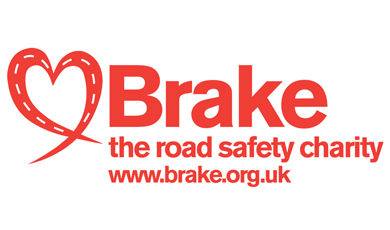


Buttons
Contact Us
Get In Touch
We aim to respond within 24 hours. Plus, you can find most answers to your questions on the FAQ section and in our external link buttons above. There is also a Facebook page titled springholm a75 road safety campaign which in past posts contains vastly more information, photos, press excerpts and video.
General Inquiries
info@bypass-springholm.org
Press & Media
Please contact us at:
info@bypass-springholm.org
Got Questions?
